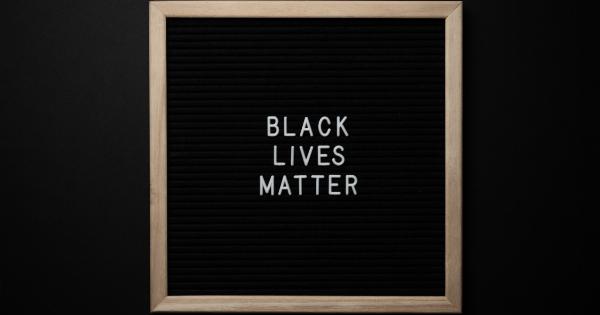Feeling overwhelmed, stressed or anxious are emotions that we experience at various phases of life. Sometimes, the stress can be normal and not cause for alarm, but sometimes, it can escalate and lead to a panic attack.
Panic attacks are the sudden onset of intense anxiety or fear that comes out of the blue. When a person experiences a panic attack, they may feel like they are having a heart attack, dying or even going insane. It is important to identify the early signs of panic and anxiety attacks and how to manage them effectively.
In this article, we will examine some of the signs of panic or anxiety attacks and strategies for managing them.
Symptoms of a Panic and Anxiety Attack
Panic attacks can occur suddenly and with little or no warning. The symptoms of a panic attack are usually physical sensations that include:.
1. Rapid Heartbeat and Shortness of Breath
A sudden increase in heart rate and breathing can accompany a panic attack. The heart rate may become rapid, the breathing may become shallow, short and restricted, and it may be difficult to take deep breaths.
When breathing becomes difficult, sufferers may feel as though they cannot draw a deep breath.
2. Tingling Sensation and Dizziness
Many people experiencing a panic attack describe feeling lightheaded, faint, or dizzy. These sensations are usually caused by hyperventilation and a decrease in blood flow to the brain.
It is also common to experience a tingling or numbness sensation in hands, arms, and legs, and a feeling of a loss of control.
3. Sweating and Chills
Drenching sweating and cold chills may be signs of an anxiety attack.
This symptom is due to the activation of the body’s “fight or flight” response, which causes a surge of adrenaline throughout the body in response to a perceived threat.
4. Fear or Panic
A fear or sense of impending doom is usually present during a panic attack. Panic attacks can be very frightening, and those experiencing them may feel as though they are losing control, becoming insane or dying.
People who experience panic attacks often describe it as the worst feeling they have ever experienced in their life.
5. Chest Pain or Tightness
Chest pain or tightness may be mistaken for a heart attack and is a common symptom. Some people may experience a feeling of indigestion or heartburn, the fear of choking, or of dying due to a medical condition that they have not been aware of before.
6. Nausea and Digestive Issues
Many people report experiencing nausea and other digestive problems, such as abdominal pain, diarrhea, or vomiting, during a panic attack. These symptoms are again related to the fight-or-flight response of the body.
7. Detachment from Reality
During a panic attack, a person may feel detached from reality. This detachment may make it difficult to communicate with others or understand what is happening around them.
The sensation may make the world feel unfamiliar and foreign, as if they are in a dream.
How to Manage Panic and Anxiety Attacks
Managing panic and anxiety attacks involves learning how to recognize the signs and symptoms of an attack and developing a plan to cope effectively. Some of the strategies that can help manage and alleviate panic and anxiety attacks are:.
1. Deep Breathing
Deep breathing is a simple and effective way to manage panic and anxiety attacks. During a panic attack, a person’s breathing becomes shallow and rapid, which can cause dizziness, lightheadedness, and other symptoms.
Deep breathing involves taking a slow, deep breath and holding it for a few seconds, then exhaling slowly. This increases the amount of oxygen-rich blood to the brain and helps reduce physical feelings of anxiety and panic.
2. Progressive Muscle Relaxation
Progressive muscle relaxation is a technique that involves tensing and relaxing various muscle groups in the body. The technique helps release tension in the body and reduces feelings of anxiety.
It is a very effective strategy for managing agitation and anxiety caused by a panic attack. The technique involves tensing muscles for a few seconds and then relaxing them while breathing deeply.
3. Meditation and Mindfulness
Meditation and mindfulness practices can help reduce anxiety and panic symptoms by teaching people to focus and stay present in the moment. Mindfulness is the practice of being aware of one’s thoughts and feelings without judgment or criticism.
Meditation involves using mindfulness practices to meditate and reduce anxiety and panic symptoms through breathing and visualization exercises.
4. Grounding Techniques
Grounding techniques are specific strategies that help individuals experiencing anxiety attacks to stay connected to the present moment.
Techniques such as focusing on an object, tapping fingers, or breath counting can help reduce the intensity of symptoms and create a sense of calm.
5. Talk Therapy
Talk therapy is a type of therapy that helps people work through and manage mental health issues. Talk therapy involves talking with a licensed professional who helps individuals work through their anxiety and panic symptoms.
The therapist can help people learn strategies for managing symptoms and work on reducing the impact of anxiety on their life.
6. Medication
Medications can be prescribed to individuals experiencing severe panic and anxiety symptoms. Medications can provide relief from the debilitating physical symptoms of anxiety, which can be life-changing.
However, medication should always be considered in collaboration with a medical professional and explored in combination with other strategies.
Conclusion
In summary, experiencing a panic attack can be a very frightening and overwhelming experience.
Recognizing the early warning signs of a panic or anxiety attack and actively working to manage the symptoms can be empowering and can reduce the chance of panic attacks happening again. There are many effective strategies for managing anxiety and panic, including deep breathing, progressive muscle relaxation, meditation and mindfulness, grounding techniques, talk therapy, and medication.
If you are experiencing severe or prolonged symptoms, it is important to consult with a medical professional for an accurate diagnosis and appropriate treatment plan.





























